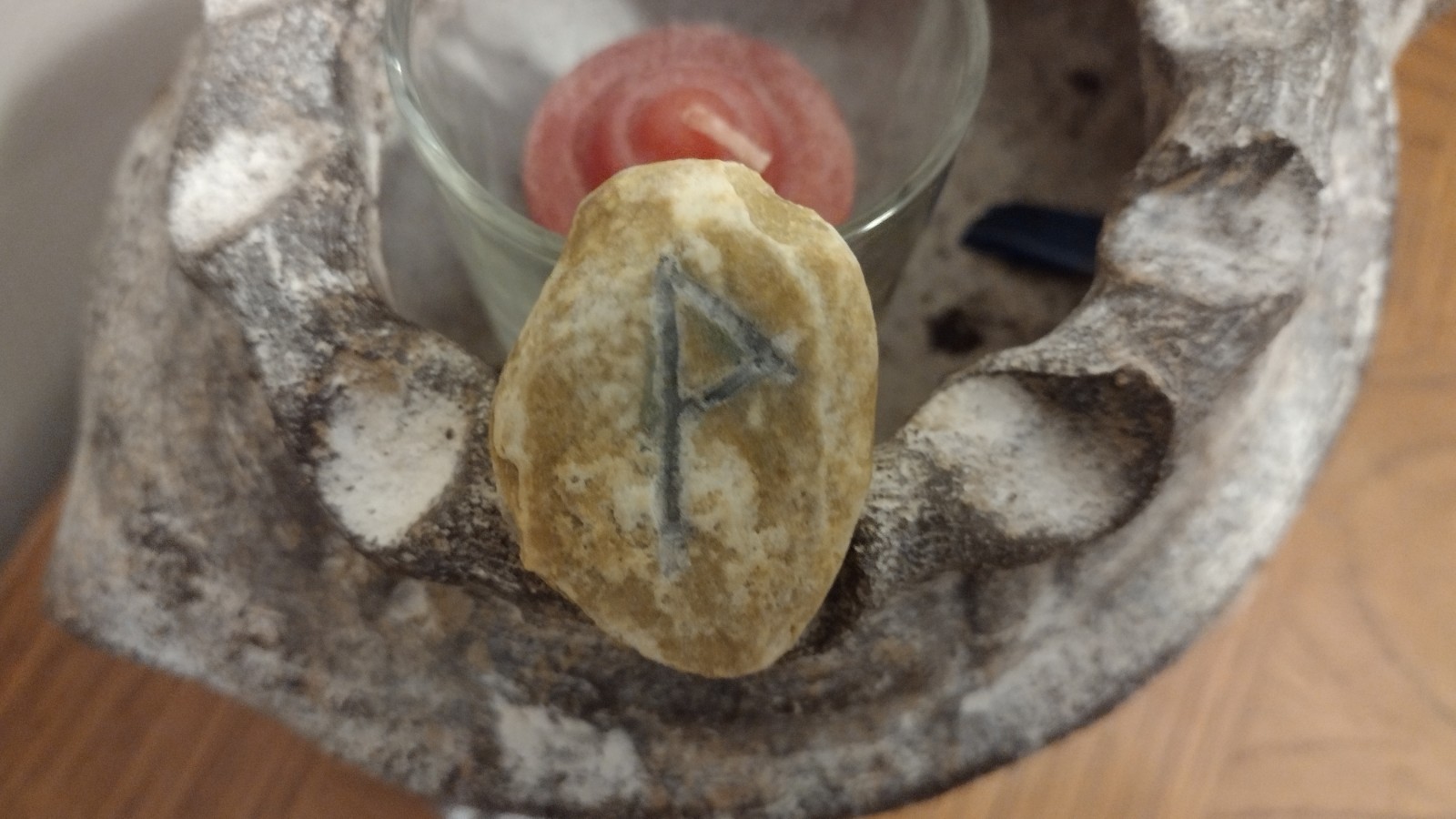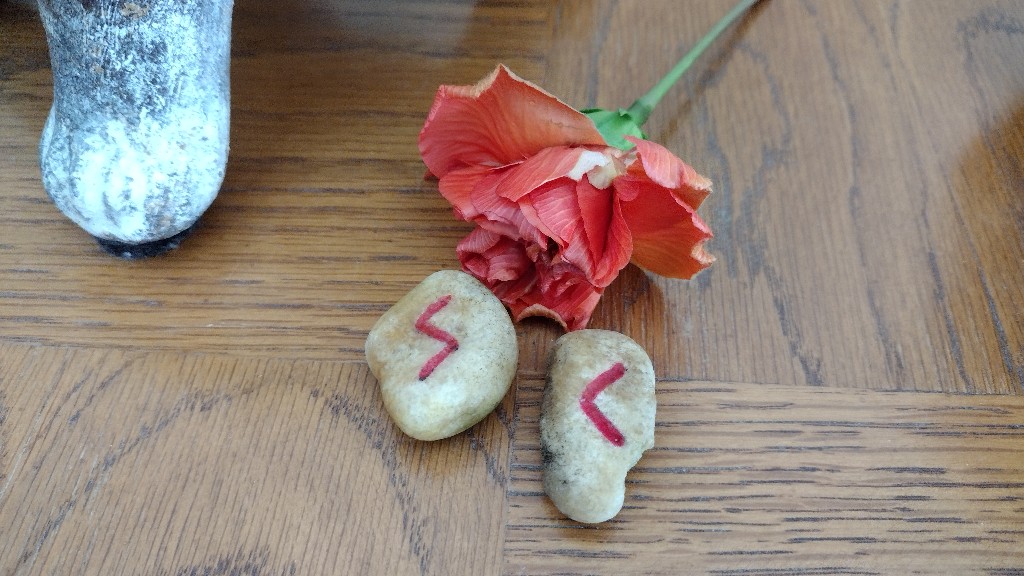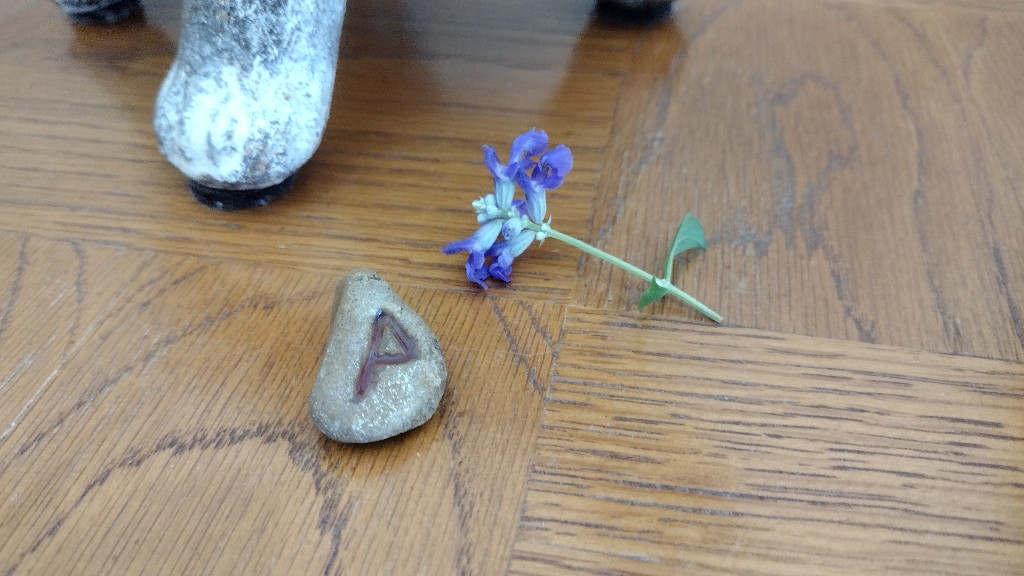
Friday Prayer (Wunjō): Thank you for walking with me through life’s difficult challenges. Your reassuring presence has not gone unnoticed.
Runes used in this Friday Prayer, Wunjō
The Wunjō (ᚹ) rune represents joy, harmony, and fulfillment in the Elder Futhark. In Asatru, Wunjō carries great significance for those seeking happiness, unity, and personal success. This rune symbolizes not only emotional well-being but also the joy found in community and shared experiences.
As a symbol of joy, Wunjō encourages a positive outlook and balance in life. People often use this rune to promote harmony within their families and kindreds. It highlights the importance of emotional bonds and social connection in Norse culture. In the practice of Asatru, followers turn to Wunjō when searching for peace and fulfillment, whether in relationships, personal goals, or communal efforts.
Wunjō’s energy represents the moment when hardships fade and a sense of achievement emerges. As such, it serves as a reminder to celebrate victories and find contentment even in life’s challenges. Many Asatru followers use this rune to focus on their emotional well-being and align themselves with the joy of living a meaningful life.
In divination, Wunjō often indicates positive outcomes, success, or the resolution of difficulties. It suggests that harmony will soon return, bringing clarity and peace of mind. When someone draws Wunjō, it may encourage them to embrace optimism and cultivate happiness in their surroundings. This aligns with Asatru’s focus on living a balanced and fulfilling life while maintaining strong connections with others.
Wunjō’s importance in Asatru lies in its connection to the joys of both individual success and collective harmony. It reminds followers to seek balance, maintain positive relationships, and appreciate the happiness that comes with overcoming challenges. Through Wunjō, people learn to embrace joy and live with purpose, which remains a central theme in Asatru practices.


